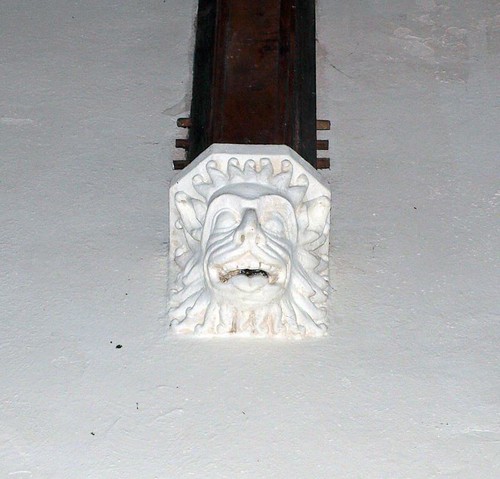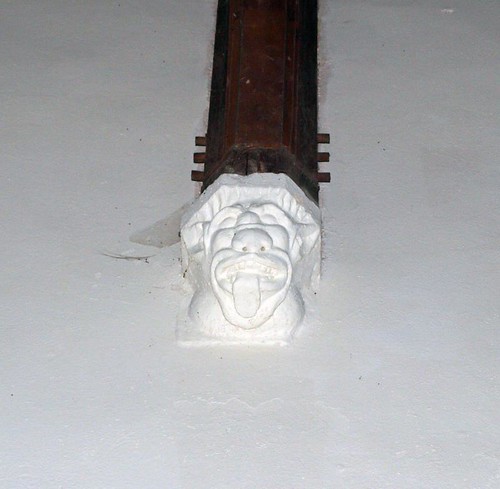ST MARY. Broad crossing tower of stone with diagonal buttresses (rebuilt 1883). It is crowned by a Herts spike. It is of the C12 as the arches inside prove. The nave has contemporary masonry but Dec and Perp windows. The chancel windows are Perp, but the Piscina inside is C14. The Perp S porch is the only flint-built part of the church. The S transept is new. - GLASS. C14 and C15 bits in the N and S walls.
Pirton. Its houses, now scattered on the Chilterns, are the descendants of a fortified village of the Conqueror’s day, which clustered round Toot Hill, on the top of which a Norman knight built his castle. We can trace the encircling ramparts. The castle has gone, but to the southwest of Toot Hill’s clump of trees is a church with something from the Normans left - two of the old patterned arches of their massive tower, one opening into the nave and one into the chancel. The tower itself has been rebuilt. The rest of the church is a patchwork of medieval and Victorian masonry, with a few fragments of 14th-century glass, an old chest, a bell of 1634., and two doors which have lasted 600 years.
Several of the farms about were the homes of Elizabethans. Hammond’s Farm they would find scarcely altered if they could see it now, and they would recognise the huge barn, 135 feet long, of the moated Rectory Farm. The Grange also has a moat from the days when fortifications were still thought necessary. Away on a wooded hill is High Down, an interesting Stuart house bearing the arms of Thomas Docwra and his wife Jane, who lived and died here, and has a stone to her memory in the church. The oak door which closed on her for the last time in 164.5 still opens to her successors.
Several of the farms about were the homes of Elizabethans. Hammond’s Farm they would find scarcely altered if they could see it now, and they would recognise the huge barn, 135 feet long, of the moated Rectory Farm. The Grange also has a moat from the days when fortifications were still thought necessary. Away on a wooded hill is High Down, an interesting Stuart house bearing the arms of Thomas Docwra and his wife Jane, who lived and died here, and has a stone to her memory in the church. The oak door which closed on her for the last time in 164.5 still opens to her successors.



No comments:
Post a Comment